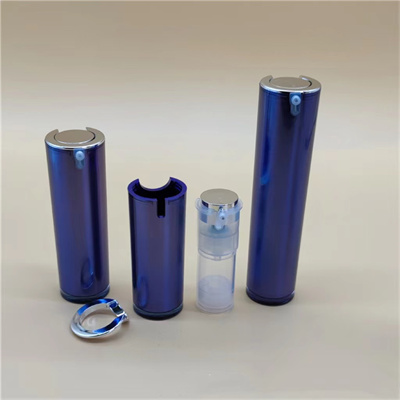Can acrylic cosmetic bottles be recycled
October 19, 2023
In today's environmentally conscious world, recycling plays a crucial role in preserving resources and minimizing waste. As consumers, we are increasingly mindful of the impact our choices have on the environment, including the skincare and beauty products we use. One common query that arises among eco-conscious individuals is, "Can acrylic cosmetic bottles be recycled?" In this blog post, we will delve into this topic and provide a professional analysis of the recyclability of acrylic cosmetic bottles.

Understanding Acrylic:
Acrylic, also known as polymethyl methacrylate (PMMA), is a highly versatile and durable plastic widely used in various industries, including cosmetics. It is chosen for cosmetic packaging due to its transparent, lightweight, and shatter-resistant properties. However, when it comes to recycling, acrylic presents certain challenges.
Recycling Acrylic Cosmetic Bottles:
While acrylic can technically be recycled, the process is more complex compared to other plastics such as PET or HDPE. Acrylic bottles used for cosmetics usually have multiple layers that incorporate different materials such as metalized coatings, spray finishes, or labels. These variations in composition make acrylic recycling less straightforward.
Recycling Technologies:
The recycling of acrylic cosmetic bottles typically requires specialized technologies, such as advanced sorting systems, capable of recognizing and separating different plastic resins. These systems can identify and isolate acrylic from other materials, ensuring effective recycling. However, these technologies are not yet widely available and may be limited to certain regions.
Recycling Limitations:
The availability of recycling facilities that accept acrylic can vary from one locality to another. In some places, recycling centers may only accept certain types of plastics, mainly focusing on easily recyclable plastics like PET or HDPE. As a result, acrylic cosmetic bottles, despite their potential recyclability, may end up being discarded as general waste.
Alternative Approaches:
In cases where local recycling facilities do not accept acrylic, exploring alternative approaches can help minimize the environmental impact. One option is to repurpose the acrylic cosmetic bottles for other uses, such as storage containers or DIY projects. Repurposing helps extend the life cycle of the product and reduces waste.
Additionally, efforts can be made to reduce the consumption of acrylic cosmetic bottles by opting for products with more sustainable packaging, such as glass, aluminum, or recycled plastic. Choosing brands that prioritize eco-friendly packaging can make a significant difference in reducing the environmental footprint.
While acrylic cosmetic bottles can technically be recycled, their recyclability is not as straightforward as other plastics. The presence of multiple layers and variations in composition often hinder the recycling process. However, with the advancement of recycling technologies and increased demand for sustainable packaging, we can hope for widespread acrylic recycling in the future. Until then, exploring alternative approaches like repurposing and opting for more sustainable packaging options can contribute to a greener future.
Please remember, as consumers, our choices matter. By staying informed and making conscious decisions, we can collectively drive positive change for a more sustainable world.
